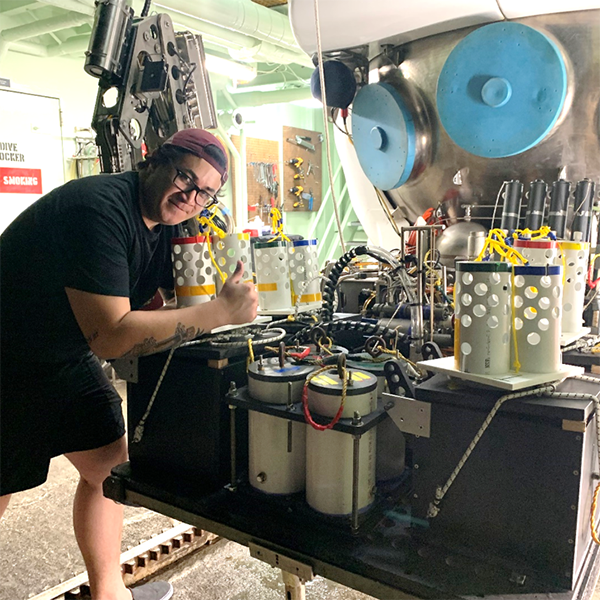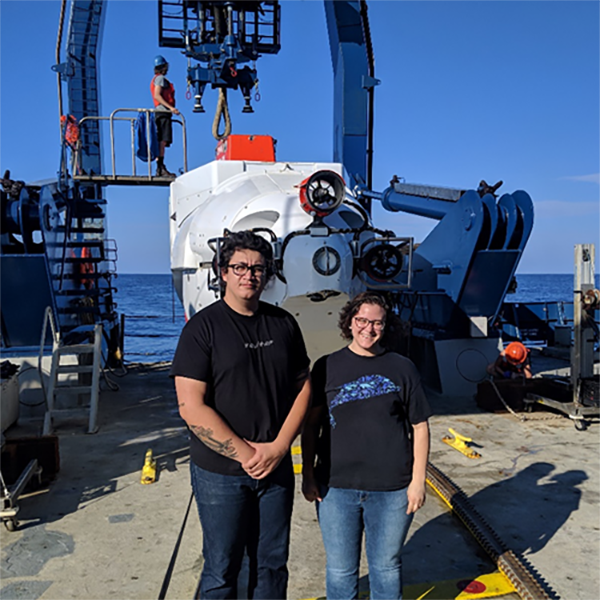Charles Holmes II
Graduate Student Spotlight



Name: Charles Holmes II
Current Degree Program: Ph.D.
Advisor: Dr. Jason Sylvan
Research fields: geomicrobiology, microbial oceanography, biogeochemistry of hydrothermal vents
Briefly introduce yourself.
I was born in Virginia and went to college there at James Madison University, but I also grew up north of Chicago, Illinois. Aside from my studies, I spend my time learning new recipes and cooking, playing synthesizers, and watching all sorts of college sports. I spend a lot of time getting tattoos and seeing concerts in Austin.
What degree(s) do you currently hold?
I graduated with a B.S. in Biology from James Madison University in Spring 2018 before coming to Texas A&M University. I did research on the ecology of antibiotic resistance with Dr. James Herrick and aquatic microbiology with Dr. Morgan Steffen.
What drew you to Texas A&M Oceanography?
My first experience with the Texas A&M Oceanography department was as an REU (Research Experience for Undergraduates) student in summer 2017. I was very excited about the hydrothermal vent work that Dr. Sylvan does, and I accepted the offer to the program as soon as I got it. Now that I am a graduate student, I love what a supportive community of graduate students and faculty we have in our department.
Briefly tell us about your current research.
Since their discovery in 1977, oceanographers have learned a great deal about ocean chemistry, geology, and the deep biosphere from active hydrothermal vents. Inactive (sometimes called “dead”) vents and vents which have recently ceased venting are poorly understood by comparison, despite the long-term biogeochemical impacts they may have on the ocean. In March/April of 2019, we sailed to 9˚50’N on the East Pacific Rise to sample active and inactive vents and set up seafloor incubations (all using the HOV Alvin) to simulate the inactivation of venting. With a team of geologists, organic and inorganic geochemists, and microbiologists, the Hot2Cold Vents project aims to determine how the succession of active to inactive hydrothermal chimneys may impact the ocean on a timeline of weeks to years.
What are your skills or analytical procedures related to your research or experiment?
I combine metabolic assays and next-generation DNA sequencing technology to understand how the composition and function of microbial communities change across spatial, temporal, and geochemical gradients.
Tell us about any awesome fieldwork or research-related stories during your graduate degree?
The research cruise, funded by the National Science Foundation, I participated this past spring was my first experience on a global class vessel (in this case, aboard R/V Atlantis), and I had the fantastic opportunity to have multiple dives in HOV Alvin. I was absolutely mesmerized by the aesthetics of the East Pacific Rise, with marvelous hydrothermal vents punctuating extensive structures of relatively young basalts. Thanks to my pilot Danik Forsman and my co-observer Kate Campbell, a graduate student at TAMU-Galveston, I had a wonderful experience which allowed me to reconsider my place in the universe while completing all of our science objectives.
